- Home
- J. A. Jance
Dance of the Bones Page 5
Dance of the Bones Read online
Page 5
Why diamonds? She’d been in the illicit Indian artifact business for a while, but pots were usually too hard to find. Diamonds were easier to come by, and they weighed a lot less. At the moment, nobody, including the cartels, Border Patrol, and the occasional robber, seemed to be looking for diamonds, at least not so far.
A year or so earlier Ava and Harold had been returning to the United States from their condo in San Carlos with a jar full of peanut butter, which Ava had salted with diamonds. South of Nogales, they’d been pulled over by a bunch of gun-toting banditos posing as Federales. The crooks had happily relieved Harold of his wallet and Ava of her purse, making off with close to a thousand bucks in cash, but they had completely missed the diamond-stuffed peanut butter jar sitting in plain sight in the picnic cooler. The crooks hadn’t been any the wiser, and for that matter, neither had Harold.
Ava no longer brought the goods across the border herself; that was far too dangerous these days. Now she had a small crew of worker bees to do that part of the job. She figured it would only take a couple more shipments to have enough to make a break for it as soon as Harold corked off, which might well be sooner than later.
The problem was, she had recently learned that a ghost from her past was about to surface. What she didn’t need right now was anything at all that would call attention to her earlier life. Unfortunately, according to the newspaper that morning, Big Bad John Lassiter’s name was once more in the news. If he ended up back in court, someone might well dig deep enough into the past to learn that a girl named Ava Martin, now Mrs. Harold Richland, had been a prosecution witness in both of John’s previous murder trials. That might be enough to bring her entire enterprise crashing down around her ears. There was no way in hell she was going to let that happen.
Ava’s drink was gone. She was ready for another. Before she got up to pour it, she kicked off her high heels. Most women her age had given up wearing heels by now, but not Ava. Whenever Harold was up and about, she was careful to dress the part. A dyed-in-the-wool Republican, he had always raved about Nancy Reagan. In Ava’s continuing effort to give Harold no cause for complaint, she emulated Nancy in every way—right down to the pearls, the chic size four tailored suits, and the high heels. That evening, though, since Harold had already checked out and gone night-night, she let her stockinged feet revel in the lush living room carpeting.
At the bar, Ava refilled her glass—no ice—and stood staring back and forth between the two trophies she had held back when she had sold off Amos Warren’s goods. One was a tiny pot, a miniature olla, that she had kept and treasured from the moment she pulled the cloth-wrapped piece out of Amos Warren’s stolen backpack. The other was a serving-tray-sized flat hunk of limestone with the skeleton of what looked like a crocodile fossilized inside it. That hadn’t come from the backpack. Ava had stolen it from Amos’s house when she’d cleaned that out, too. She wouldn’t have had any idea what it was had Amos not gone to the trouble of sticking a helpful label on the back. Printed in fading but still readable ink on a piece of masking tape were the words Phytosaur, Willcox Playa, 1967, followed by the initials AW.
For some reason, those two pieces had captured Ava’s imagination—the tiny pot and the Gila-monster-sized fossil. After Amos’s death, she had revisited the area around the crime scene numerous times. Johnny had taught her enough about searching for artifacts that she had known to go looking farther upstream, and she had lucked out, finding a whole other treasure trove of unbroken pots. Each of those she’d sold to the highest bidder without a second thought.
But Fito, as she called her fossilized treasure, and the tiny pot were hers to keep, and she had never considered selling either one. Instead, she had displayed them together, in one home after another, as she gradually moved up in the world to ever more upscale digs.
In this house, for instance, high in the Catalinas, Ava kept the olla on a clear glass shelf high above the bar, the humble piece of reddish clay keeping company with Harold’s first wife’s collection of elegant Rosenthal crystal stemware. The rock platter, along with its nightmarish, toothy captive, stood on the counter, propped against the bar’s mirror, where it served as a somewhat fierce background to Harold’s collection of expensive booze.
Taking the pot down from its place on the shelf, Ava stood there for a time, absently tracing the tips of her fingers over the faint image that remained stubbornly etched there—a tortoise and an owl. She often wondered about them—about why those two images had been placed there together. They seemed so different, and yet here they were in some kind of mysterious juxtaposition.
It was as her fingers slid thoughtfully across those mysterious figures that she reached a final conclusion about what she should do—a decision she’d been wrestling with all day long, since the moment she had seen the article in the newspaper.
After all these years, there was a good chance that Big Bad John Lassiter was about to have yet a third trial for a murder Ava herself had committed. She had dodged that bullet the first two times, but what if new information had come to light, especially something that might implicate her?
“That’s not going to happen,” Ava vowed aloud to herself as she returned the pot to its place on the shelf. “Not, not, not!”
Taking her new drink in hand, Ava made her way into the bedroom—into her bedroom; she and Harold had separate bedrooms these days. Setting her untouched drink down on the counter in the bathroom, she ducked into the attached walk-in closet. In the backmost wall, in the section behind her floor-length gowns, was the wall safe in which Alvira, her predecessor, had once kept her considerable collection of jewelry, which had, of course, been divvied up between Harold’s two kids upon Ava’s arrival.
Harold could no longer get around well enough to get to the safe on his own. He had no idea that Ava had long since changed the combination, and for good reason, too. That was where she was slowly accumulating her supply of diamonds along with a collection of forged passports, IDs, and preloaded credit cards. It was also where she kept a collection of burner phones. Just because she knew how to get in touch with people didn’t necessarily mean that she wanted them to be able to get back in touch with her.
Taking one of those out, she consulted the little black book that also resided in the safe. She found the number she needed and made the call. There was no sense in stalling around about it. She had made her decision.
Big Bad John Lassiter had to go, the sooner the better!
CHAPTER 4
THEY SAY IT HAPPENED LONG ago that Young Girl—Chehia—from Rattlesnake Skull village, was out walking in the desert where she found a young man who was injured. He was lying under a mesquite tree, crying. Young Girl knew at once that Young Man was Apache, Ohb. Even though she did not speak Young Man’s language, Young Girl knew that he needed help.
You must understand, nawoj, my friend, that the Apache and the Desert People have always been enemies. When I’itoi created everything, he loved the Tohono O’odham, the Desert People. They were friendly and industrious, so I’itoi kept them living close to his sacred mountain, Ioligam, where they stayed busy in their fields, growing corn and wheat, melons and squash.
But I’itoi found the Apache troublesome. They quarreled a lot and they were very lazy, so I’itoi sent them to live on the far side of the desert. There they found plenty of animals to hunt, but it was hard to grow food. And so, whenever the Apaches grew too hungry, they would ride across the desert to steal the food the Desert People had grown.
When Chehia, Young Girl, found the injured man, she could have just walked away. But he cried so piteously that she did not. Instead, she helped him to a nearby cave and hid him there. Every day, she would slip away from the village and bring him water to drink and food to eat. Soon he grew well enough to return to his own people, but by then Young Man and Young Girl had fallen in love. He asked Chehia to run away with him,
but she was afraid to leave her own people.
One day, when she brought Young Man’s food, he pointed off across the valley to a place where smoke was rising in the air. “Those signals are signs that my people are coming,” he said. “You must run back to the village and warn yours that they are in danger.”
LANI’S BODY TENSED WITH UNEASE as Leo Ortiz turned the Toyota Tundra off the highway and headed down Coleman Road. The three of them—Leo Ortiz, Lani, and Leo’s son, Gabe—had driven the whole way from Sells in almost total silence, one broken only by incessant clicks from the video game Gabe was playing on his phone in the backseat.
Off to the left, Lani could see the charco, the water hole, that in her mind still belonged to the long-abandoned village of Rattlesnake Skull. Now, as often happened when she was upset, the almost invisible pin-sized flaws on Lani’s face—ones she covered each morning with deftly applied makeup—began to prickle and itch. She knew what was causing the old ant bites to burn—Rattlesnake Skull charco was where all this had started so many years ago. The water hole was where the authorities had found the body of Gina Antone, a teenage Tohono O’odham girl who had been tortured and murdered by an evil ohb-like Anglo named Andrew Carlisle. Garrison Ladd, Lani’s mother’s first husband, had been a suspect in that case right along with Carlisle.
In the course of the homicide investigation, Diana and the dead girl’s grandmother, Rita Antone, had been thrown together. To everyone’s amazement and to the dismay of the people on the reservation, the two women—the Indian and the Anglo, the old Tohono O’odham widow and the young Milgahn one—had become fast friends.
On the reservation, Rita Antone, originally from Topawa, had long been known as Hejel Wi i’thag, Left Alone. At the time, Diana, a teacher on the reservation, had been living in a teachers’ compound mobile home in the same village. United in their mutual loss and grief, the two women had left the reservation behind and moved to Tucson, where they had worked together to rehab a ramshackle river-rock house in the Tucson Mountains. When Diana’s son, Davy, was born, Rita looked after him and became the boy’s beloved Nana Dahd, his godmother. Years later, when Lani was adopted into the Ladd/Walker household, Rita Antone became Lani’s godmother, too.
Lani was eleven years younger than Davy. Even though Rita was elderly by the time Lani showed up, it was Rita who had schooled both children in the sacred traditions and legends of the Tohono O’odham. She was the one who had taught them the endangered ancient art of basketmaking and had pointed out and given names to the various herbs, plants, and fruits that were at home in the Arizona desert. Rita had carefully described how some of the plants were useful in the healing arts while others were used in religious ceremonies. She also made sure they could easily recognize and avoid the ones that were poisonous and even deadly.
And it was through Rita that Lani had come to the attention of Brandon Walker and Diana Ladd.
Lani had begun life on the Tohono O’odham as the neglected child of a jailed father and a runaway mother. Abandoned while still a toddler, Clemencia Escalante, as Lani was known back then, had been left in the care of an impoverished, aged, and exceedingly deaf grandmother in the village of Nolic, which means The Bend. During the summer months, the older children in Nolic had helped look after Clemencia, but once school started, the baby, little more than a year old, had been the only child left in the village.
On a warm September afternoon with her caretaker sound asleep, Clemencia had somehow made her way outside—probably through a door left open to allow a bit of breeze into the rough adobe house. Outside and unsupervised, the child had wandered away from the house. Eventually she had become trapped in a nest of Maricopa harvester ants, whose venom is legendary. There was little doubt that she had screamed as the ants bit into her because she was still screaming an hour or so later when the school bus dropped off the other children. The children were the ones who found her, not the grandmother. Lack of hearing was the reason the grandmother hadn’t heard the child screaming, but for the authorities, an even greater concern was that she had failed to notice that the little girl had gone missing.
Close to death from the poison of literally hundreds of bites, Clemencia had been transported first to the Sells Indian Hospital. When her condition worsened, she was taken to the ER at Tucson Medical Center. At the time, Wanda Ortiz, Fat Crack’s wife and Gabe’s grandmother, had been the social worker in charge of Clemencia’s case.
Clemencia was still hospitalized in Tucson when, on a trip back to Sells from seeing her, Wanda and Fat Crack had stopped by the house to see Rita Antone, Fat Crack’s auntie. In the course of the conversation, Wanda had mentioned the situation with the little ant-bit girl. By now the grandmother had been deemed an unsuitable guardian. Even though some of Clemencia’s other relatives still lived in Nolic, none of them was willing to take the child in once she was released from the hospital.
“Why not?” Rita had asked.
“They’re a superstitious lot,” Wanda explained. “They remember the story of Kulani O’oks, the Woman Who Was Kissed by the Bees who, under the name of Mualig Siakam—Forever Spinning—went on to become the Tohono O’odham’s greatest medicine woman. They’re afraid that the ant bites have made Clemencia a dangerous object, one who will bring Kuadagi Mumkithag, Ant Sickness, to the village.”
“What will become of her then?” Rita wanted to know.
“There’s an orphanage in Phoenix,” Wanda said, “one operated by the Baptist Church. They take in children from any number of tribes.”
“Who runs the orphanage,” Rita had asked, “Indians or Milgahn?”
“Anglos, I’m sure,” Wanda answered with a shrug.
“No,” Rita said, speaking with surprising forcefulness. “That cannot be. She needs to be raised here.”
Wanda was aghast. It would have been rude, of course, to point out that Rita was far too old to adopt the child and raise Clemencia on her own, but Rita had already come to the same conclusion.
“Mrs. Ladd and Mr. Walker can adopt her,” Rita declared. “I’ll be here to see that she learns what she needs to know about her people.”
“Diana Ladd and Brandon Walker may be great friends of the tribe, but they’re Anglos,” Wanda had objected. “Tribal courts are discouraging Anglo adoptions these days.”
“Why?” Rita had retorted. “Do they think Baptists who run orphanages will do a better job of raising her than these two people will, especially if they have my help?”
In the end and much to Wanda Ortiz’s amazement, Rita’s wishes had won the day. Brandon Walker and Diana Ladd had become first Clemencia Escalante’s foster parents and eventually her adoptive ones. At Rita Antone’s insistence, they had given their adopted daughter a new name—Lanita Dolores Walker.
Much later, while Rita and Lani wandered hand in hand along the paths of the Arizona/Sonora Desert Museum, Rita had related the story of how, in a time of terrible drought, a young Tohono O’odham woman named Kulani O’oks had been saved from death by the beating of the wings of the Ali-chu’uchum O’odham, the Little People—the bees and wasps, the butterflies and moths. Rita had gone on to explain how, back when Rita herself had been a child, her grandmother, S’Amichuda O’oks—Understanding Woman—had predicted that someday Rita would find a girl who would grow up to be a trusted medicine woman, someone just like Kulani O’oks, the Woman Who Was Kissed by the Bees.
“You’re only a little girl now,” Rita had said, “but I hope that you will grow up to be that medicine woman.”
“Kulani O’oks,” Lani had repeated the words several times, letting the strange and yet familiar collection of syllables roll across her tongue. Suddenly she understood. “Is that why people call me Lani—because of her, Kulani?”
Rita’s wrinkled brown face had beamed with satisfaction. “Yes, my child,” she had said, “that’s it exactly.”
<
br /> A NARROW STRIP OF ROADWAY had been carved into the foothills leading up Ioligam’s eastern flank. Winter rains had left it rutted, uneven, and washed out in spots. Even in four-wheel drive, Leo’s Toyota struggled to make the climb. Closing her eyes, Lani shut out the noise of the laboring engine and prayed that Rita Antone had been right and that somehow the spirit of Kulani O’oks would be with her.
They drove past the small clearing where Fat Crack had pitched the tent while Lani had lived through her sixteen days of exile, her e lihmhun—the traditional Tohono O’odham purification ceremony required after the killing of an enemy. Because Lani Walker had indeed taken a human life. Andrew Carlisle, in one last bid for vengeance against Lani’s mother, had sent a fellow inmate, Mitch Johnson, to kidnap and kill Lani. In a final confrontation inside Ioligam’s network of caverns, Lani had managed to turn the tables on her would-be killer. The crew of experienced rock climbers that had finally removed Mitch Johnson’s remains from the depths of the cavern had reported that he had died in a fall.
For years only Lani and Fat Crack Ortiz had known the whole truth about what had happened—that she was the one responsible for the man’s death. She had used her bare feet to push a fragile stalagmite loose from its moorings and send it plunging into the depths. Johnson had still been alive and moaning until the rock hit him. Had anyone examined the remains of the rock, they no doubt would have found Lani’s footprints on it, but the medical examiner and the detectives—who had zero interest in climbing down into the abyss—had been satisfied with the idea that the fall alone had killed him.
During those long and lonely sixteen days with her face painted black, Lani had fasted during the day. In the evenings, Fat Crack brought her the only meal she was allowed—a dish of salt-free food.

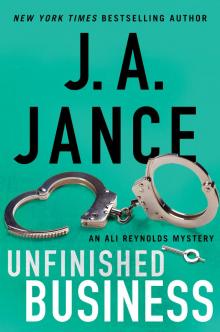 Unfinished Business
Unfinished Business Missing and Endangered
Missing and Endangered Man Overboard
Man Overboard The Old Blue Line
The Old Blue Line Trial by Fury
Trial by Fury Edge Of Evil
Edge Of Evil Field of Bones: A Brady Novel of Suspense (Joanna Brady Mysteries)
Field of Bones: A Brady Novel of Suspense (Joanna Brady Mysteries) After the Fire
After the Fire Deadly Stakes
Deadly Stakes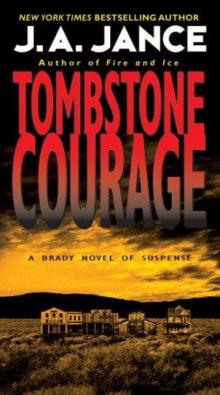 Tombstone Courage jb-11
Tombstone Courage jb-11 Justice Denied
Justice Denied J P Beaumont 16 - Joanna Brady 10 - Partner In Crime (v5.0)
J P Beaumont 16 - Joanna Brady 10 - Partner In Crime (v5.0) Dance of the Bones
Dance of the Bones Exit Wounds
Exit Wounds Left for Dead
Left for Dead Partner In Crime
Partner In Crime Brandon Walker 02 - Kiss Of The Bees (v5.0)
Brandon Walker 02 - Kiss Of The Bees (v5.0) Name Witheld jpb-13
Name Witheld jpb-13 Joanna Brady 01 - Desert Heat (v5.0)
Joanna Brady 01 - Desert Heat (v5.0) Proof of Life
Proof of Life Random Acts
Random Acts Day of the Dead bw-3
Day of the Dead bw-3 Shoot / Don't Shoot jb-3
Shoot / Don't Shoot jb-3 Without Due Process
Without Due Process Fatal Error ar-6
Fatal Error ar-6 Payment in Kind
Payment in Kind Long Time Gone
Long Time Gone Minor in Possession
Minor in Possession Stand Down
Stand Down Judgment Call
Judgment Call Betrayal of Trust jpb-20
Betrayal of Trust jpb-20 Hand of Evil
Hand of Evil Devil's ClawJ
Devil's ClawJ Lying in vait jpb-12
Lying in vait jpb-12 Day of the Dead
Day of the Dead Without Due Process jpb-10
Without Due Process jpb-10 Until Proven Guilty jpb-1
Until Proven Guilty jpb-1 Field of Bones
Field of Bones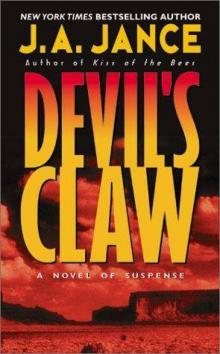 Devil’s Claw
Devil’s Claw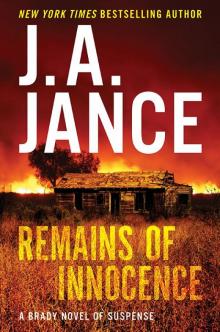 Remains of Innocence
Remains of Innocence Injustice for All
Injustice for All Web of Evil ar-2
Web of Evil ar-2 Paradise Lost jb-9
Paradise Lost jb-9 Improbable cause jpb-5
Improbable cause jpb-5 Skeleton Canyon
Skeleton Canyon No Honor Among Thieves: An Ali Reynolds Novella (Kindle Single)
No Honor Among Thieves: An Ali Reynolds Novella (Kindle Single) Dead to Rights
Dead to Rights Alison Reynolds 01 - Edge Of Evil (v5.0)
Alison Reynolds 01 - Edge Of Evil (v5.0) Ring In the Dead
Ring In the Dead Ring in the Dead: A J. P. Beaumont Novella
Ring in the Dead: A J. P. Beaumont Novella Clawback
Clawback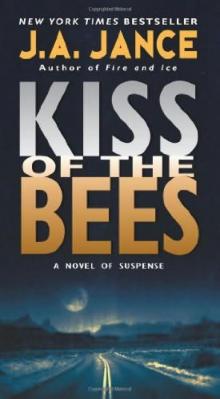 Kiss the Bees bw-2
Kiss the Bees bw-2 Fire and Ice jpb-19
Fire and Ice jpb-19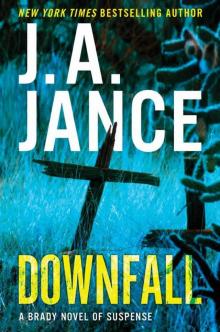 Downfall
Downfall Deadly Stakes ar-8
Deadly Stakes ar-8 Fatal Error
Fatal Error Name Withheld
Name Withheld Duel to the Death
Duel to the Death Cold Betrayal
Cold Betrayal Betrayal of Trust
Betrayal of Trust Web of Evil
Web of Evil Outlaw Mountain
Outlaw Mountain Shoot Don't Shoot
Shoot Don't Shoot A Last Goodbye
A Last Goodbye Ali Reynolds 08 - Deadly Stakes
Ali Reynolds 08 - Deadly Stakes Hour of the Hunter: With Bonus Material: A Novel of Suspense
Hour of the Hunter: With Bonus Material: A Novel of Suspense Trial by Fire
Trial by Fire Exit Wounds jb-11
Exit Wounds jb-11 Hand of Evil ar-3
Hand of Evil ar-3 Failure to appear jpb-11
Failure to appear jpb-11 Tombstone Courage
Tombstone Courage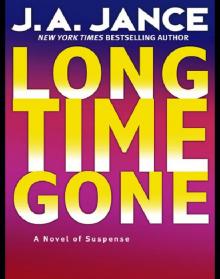 Long Time Gone jpb-17
Long Time Gone jpb-17 Kiss of the Bees w-2
Kiss of the Bees w-2 Edge of Evil ar-1
Edge of Evil ar-1 Cruel Intent
Cruel Intent Improbable Cause
Improbable Cause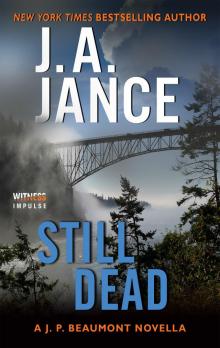 Still Dead
Still Dead Downfall (2016)
Downfall (2016) Justice Denied jpb-18
Justice Denied jpb-18 Damage Control
Damage Control Rattlesnake Crossing
Rattlesnake Crossing Desert Heat
Desert Heat Queen of the Night
Queen of the Night JP Beaumont 11 - Failure To Appear (v5.0)
JP Beaumont 11 - Failure To Appear (v5.0) Until Proven Guilty
Until Proven Guilty Minor in possession jpb-8
Minor in possession jpb-8 Left for Dead ar-7
Left for Dead ar-7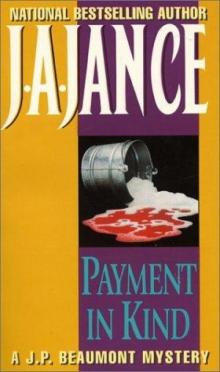 Payment in kind jpb-9
Payment in kind jpb-9 No Honor Among Thieves
No Honor Among Thieves